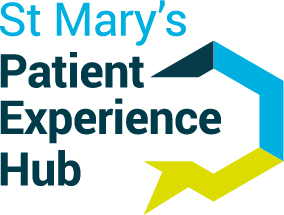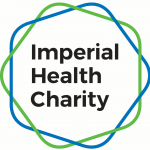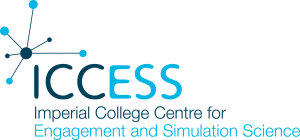The St Mary’s Patient Experience Hub (the Hub) is an exciting project focused on using medical simulation to improve the experience of patients and families at St Mary’s Hospital (London), through the development of innovative approaches to care.
The Hub is led by the Imperial College Centre of Engagement and Simulation Science (ICCESS), who bring together expertise in developing realistic medical simulation tools and environments, with innovative approaches to engagement. ICCESS are working in partnership with Imperial College NHS Healthcare Trust and the project is funded by the Imperial Healthcare Charity.
The current focus of the Hub is developing simulation-based projects and activities aimed at improving the experience of patients and families at St Mary’s Hospital during a ‘segment of life’: from conception through infancy and adolescence to young adulthood.

What is simulation and how can it benefit patients?
Medical simulation is the recreation of clinical procedures, scenarios or systems. It has traditionally been used mainly for training healthcare professionals, but ICCESS are pioneering the use of simulation as a means of addressing wider challenges in healthcare. The simulation tools and techniques developed by ICCESS take a number of forms.
Sequential Simulation
Sequential Simulation (SqS) is the physical reenactment of patient care pathways. An SqS is similar to a theatre play, with healthcare professionals performing their everyday roles, actors playing the patients, and backdrops and props providing a sense of realism. SqS events are delivered in front of an audience, typically made up of all those involved in the real-life pathway, including clinicians, patients, hospital managers, etc.
SqS can be used for a variety of purposes, including piloting changes to healthcare systems and processes, training and education of healthcare professionals, and enabling patients and those involved in their care to voice their opinions around current and future systems. In the video on the right, the ICCESS team used SqS to help a Clinical Commissioning Group engage staff, patients and other constituents in their move to a new integrated care model.
We are currently using SqS within the St Mary’s Patient Experience Hub to enable parents of children under the age of 5 to share their views on how helpful different healthcare services are to them when their child is unwell.
Haptic technology and computer modelling
Haptic technology aims to recreate the sense of touch via a device that serves as an interface between a user and a computer system. This haptic device recreates both the feel and interactions experienced when performing a clinical procedure on a patient. The video on the right shows an example of one such device developed by ICCESS for training clinicians to perform rectal examinations.
Computer modelling and simulation refers to the process of constructing and manipulating computer-based representations of real life systems or anatomy. ICCESS has developed techniques that enable the creation of accurate models of patient anatomy based on medical imaging scans and the deformation it undergoes as a result of being manipulated by the hands or medical instruments.
These two areas of technology can be combined as part of the development of sophisticated devices used to train clinicians in specific examinations. Improving training can result in an improved experience for patients. Equally, such training devices can be used to educate and inform patients through the creation of a shared space where patients and clinicians can discuss examinations or procedures to be performed. Within the Hub, we are developing a prototype simulator to train healthcare professionals in intrapartum vaginal examinations.


